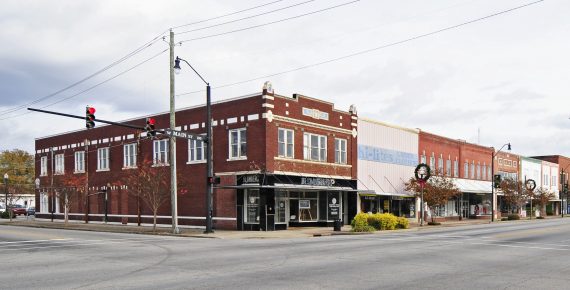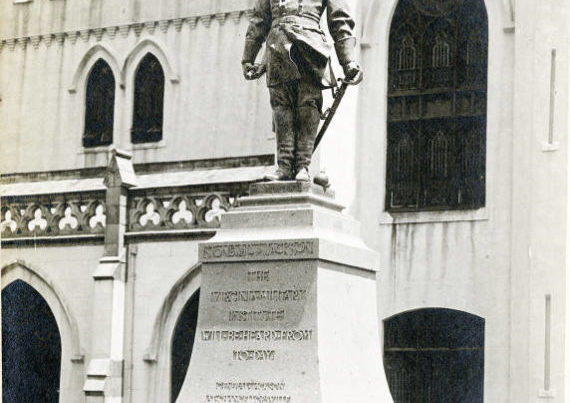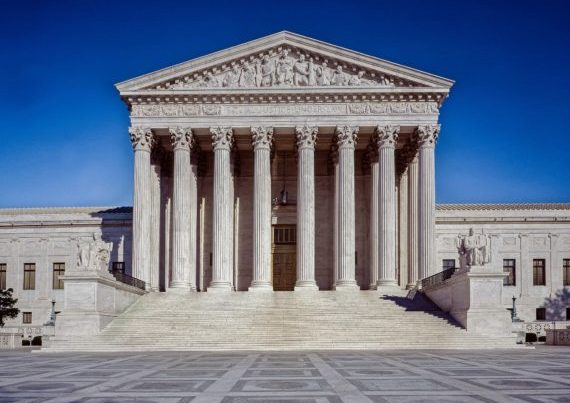Editor’s Note: This piece was originally published at The Fleming Foundation.
This piece appeared in the second issue (1980) of the Southern Partisan, which Clyde Wilson and I (along with John Shelton Reed, Sam Francis, and Chris Kopff) had created. I have corrected a number of errors–including the quotation from the film version of Gone with the Wind–made several small verbal improvements, and added some bits of material I have always used in conversation. These major additions I have indicated by square brackets.
Last month I took a short drive through the midriff of the Carolinas—through Georgetown, Conway, Marion, Latta, and Dillon, right through the middle of Rowland and Pittsboro all the way to Chapel Hill. The whole day, I could not help wondering why so many Southern towns had become so ugly. Now, we all take for granted the strident squalor of New Jersey (at least that part of it you see from the Turnpike) and the sterile dulness of Ohio. As the carpetbagger said of Scarlet O’Hara, “That’s one of them Georgia peaches. Nothing like that in Ohio.” But what is our excuse?
On my way to Chapel Hill, I always look forward to Marion. I once spent an afternoon there, when the right wheel rolled off my Volkswagen beetle right down the middle of the tree-lined main street on a late Sunday afternoon, to the astonishment of three colored children, a genteel elderly couple taking a stroll after Sunday dinner, and seven startled dogs.
[Ringing in my ears, as I watched the horror unfold, were the last words I had heard from my auto mechanic Butch Varner, whom I had consulted about the advisability of driving the old bug to Chapel Hill, “Doctah Flemin’, the last thing you have to worry about is that rattle. That wheel is not comin’ off!” When I called Butch to ask him what he thought of the policeman’s offer of $50 to take the car off my hands, he did not waste a second on thinking it over: “If I was you, I’d take it.”]I have always liked Marion, at least some parts of it, but the town belongs to the past, like the lovelier Hillsborough in North Carolina, which is alas being transformed into a bedroom community for Chapel Hill. The present is owned by Charlotte and Chapel Hill festering and spreading like a tumor through the countryside of Orange County.
Chapel Hill! They like to call it a village, not a real village but, as the residents like to imagine, a replica of some dear little European village, complete with Rathskeller and Old War Gift Shop. Actually, it is more like a suburb—of Cambridge, Massachusetts—than a village. Some students used to joke that the day only began for the faculty when the New York Times arrived. When I was an undergraduate in the early 1960’s, it was usually called Commie Hill, but that was before the South joined the Revolution, voted for FDR, or embraced fellow-Southerner Jimmie Carter.
Go there sometime and see what generations of well-intentioned professors and their wives can do to a Southern town. They live in housing developments with names like Heritage Hills, where the street names commemorate great events of their past—Brandywine, Trenton, Concord. The developers do not seem to have heard of Kings Mountain, Cowpens, or Chancellorsville. The professors shop at gourmet food stores, where you might still be able to find a sack of grits somewhere between the imported wines, matzo, and mung beans. With such alimentary obsessions, small wonder that Brady’s [Note from 2016: long gone!] is still the best place to eat: fried chicken or fish, hush puppies, French fried potatoes, and no beer on Sunday (they do not care if it is legal).
Most alien residents of Chapel Hill claim to like the South. They ought to try visiting it some time. The “village” is a kind of Disneyworld, where second-rate Yankees with Ph.D.’s come to get a taste of the South without running the risk of meeting too many Southerners. The local Grits (as some Yankees like to call them) spend their days shouting, “Hey how you?” and making a killing on real estate, but they would not dream of biting, gouging, or stomping tourists. Few of them would even vote for George Wallace. One academic tourist—a good friend– of mine from New York—told me that after he had accepted a job in the UNC classics department at an academic meeting, he had to get out a map to find out where exactly North Carolina was. To his horror he discovered that it was not somewhere between Maryland and Pennsylvania. In New York, apparently, they do not distinguish between Wilmington, North Carolina, and Wilmington, Delaware.
I confess that I was surprised to see the same old hard-bitten sweet old things waving their STOP THE WAR placards in front of the Post Office. [They are a reminiscent of those Japanese soldiers found on remote Pacific atolls years after the end of the war. Someone really ought to have told them that we lost in Vietnam.] It has been the longest running freak show at one location since P.T. Barnum closed down his museum. And yet, when the city fathers decided to approve the hideous new bank plaza on Franklin Street, it was these same screwball academics who tried to stop it. No good country boy would dream of talking about architectural integrity or a “human scale.” I suppose it is question of tact, the recognition that people get the kind of town they want, and that, once you begin talking about integrity or honor, you have probably lost it.
It is not that the bank was a good idea. Like so much of the New South, it represents the triumph of greed over sense, but the Yankee notion of beauty—Village Charm—is in the end far more revolting than either New South greed or Old South shiftlessness. Nearby Carrboro, for example, used to be an excellent example of a rundown mill town. It was always the slum of Chapel Hill. the main street could have could have come from a Walker Evans photograph. Even the gift shop only sold flowers and “gifts.” There were no ceramic coated omelette pans or electric coffee grinders to help you to be more natural. People with a sense of honor always preferred living in Carrboro, because, as awful as it was, it was what it was. Now the inevitable progress has come and made Carrboro too cute for words. A genuine old-timey saloon has replaced the used furniture store, and instead of the old smoke shop, there is a tobacconist—very old-fashioned and quaint—where you would not dream of chewing, much less spitting. The streets are lined with small presses churning out quaint volumes that only the undereducated professoriate could possibly think of buying. The only real thing left that I saw was the new (relatively) Cliff’s Market. [I wonder if Cliff and the meat-cutters still hold up a steak to admire or chant sarcastically, as they chopped meat for a faculty wife, “Fondúe! Fondúe! Fondúe! Fondúe!]
The whole town stinks cute to high heaven. Anything is better than being cute, even the progressive filth and carelessness you cannot help noticing on a drive South from Maryland and Virginia. We usually blame it on the climate, but perhaps it is just that the South never recovered from having other people to do their work.







